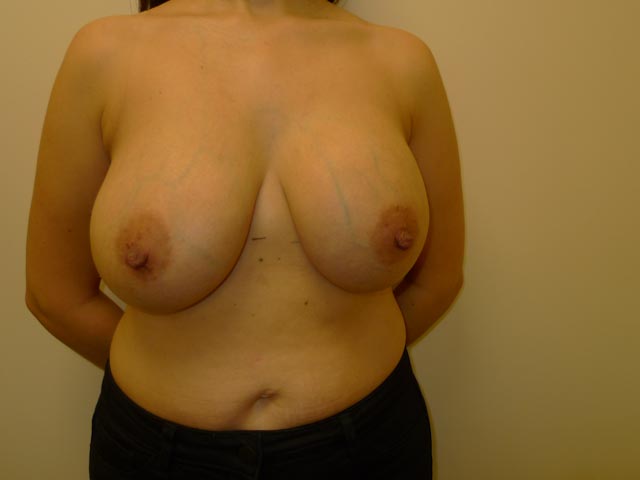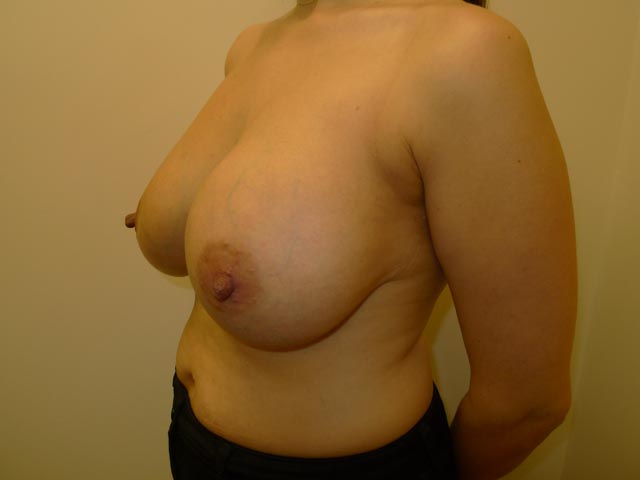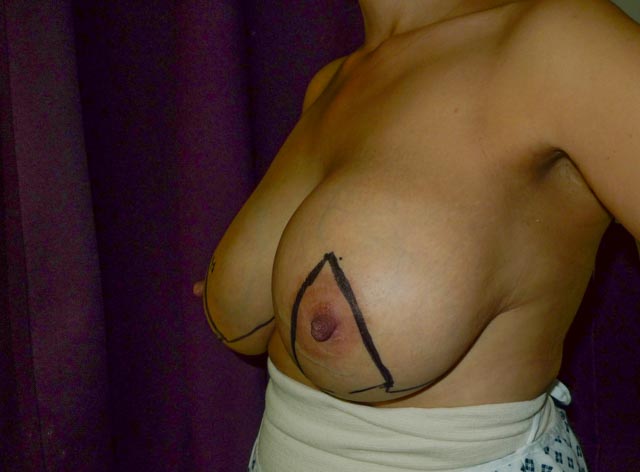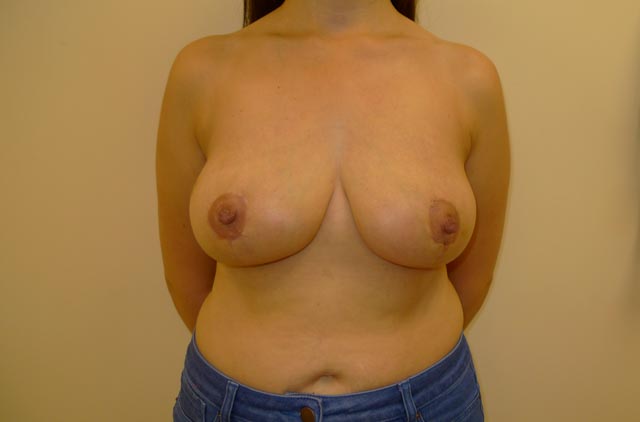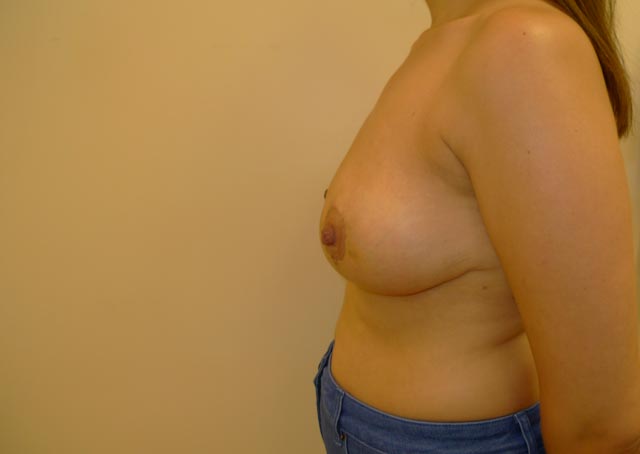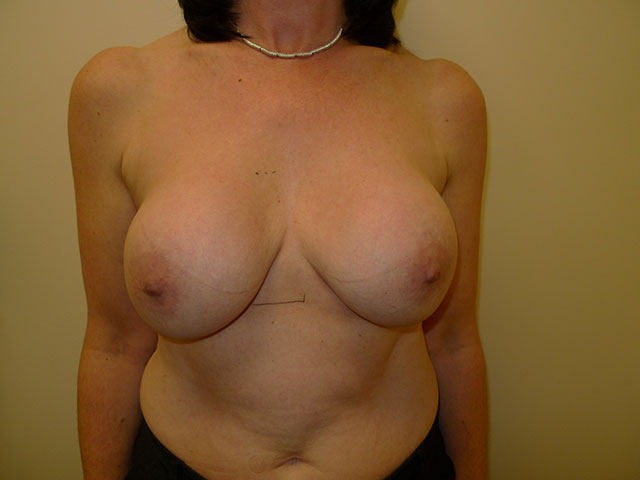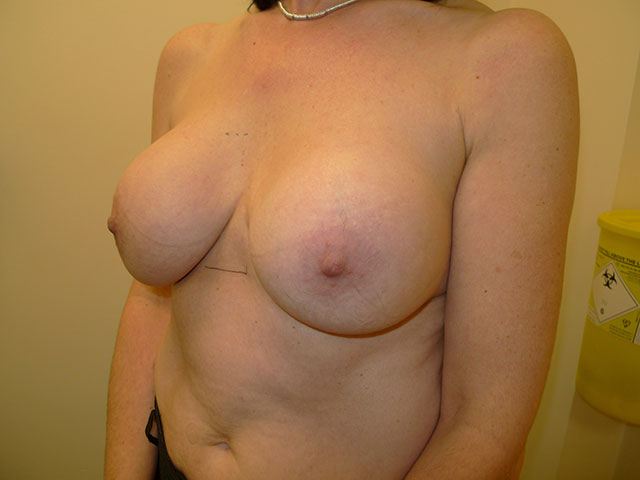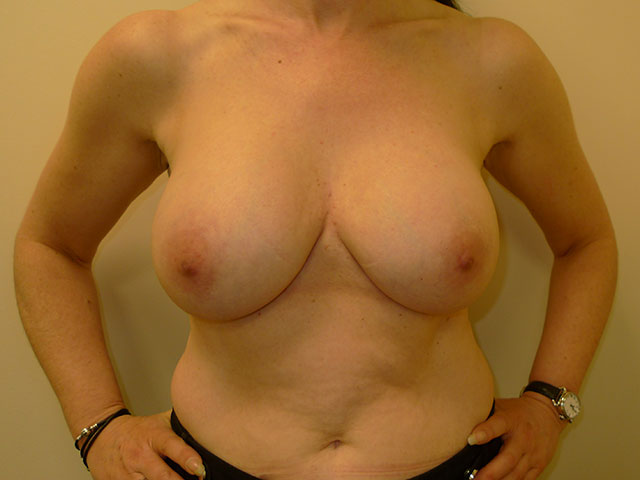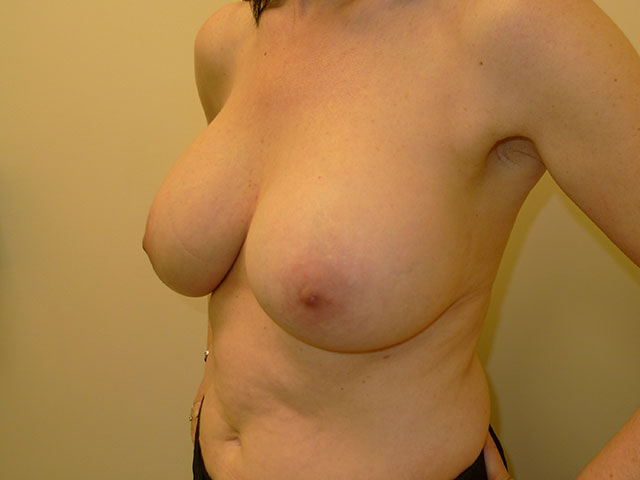*Please note that these general example photos are all from Mr Turton’s patients and have not been altered in any way. The results are unique to every individual and take each patient’s personal expectations, circumstances, starting points and body morphology into consideration.
Implant Removal after Capsular Contraction
This lady had Breast Augmentation in 2006 with 295cc implants. She developed capsular contraction of her left implant after a pregnancy and had got gradually bigger as had put on weight. She wanted her implants out and so I have done a full capsulectomy and a full wise-pattern mastopexy.
Exchange of Implants to B-Lites
This lady had capsular contraction of her 14yr old 300cc implants with marked roundness on the right. She has had full capsulectomies to get back to normal soft tissue and exchanged for the BLite lighter-weight implants which were 410cc in size. At 280gms they actually weighed less than her old implants (300gms) and give her a very natural look without extra sag.


